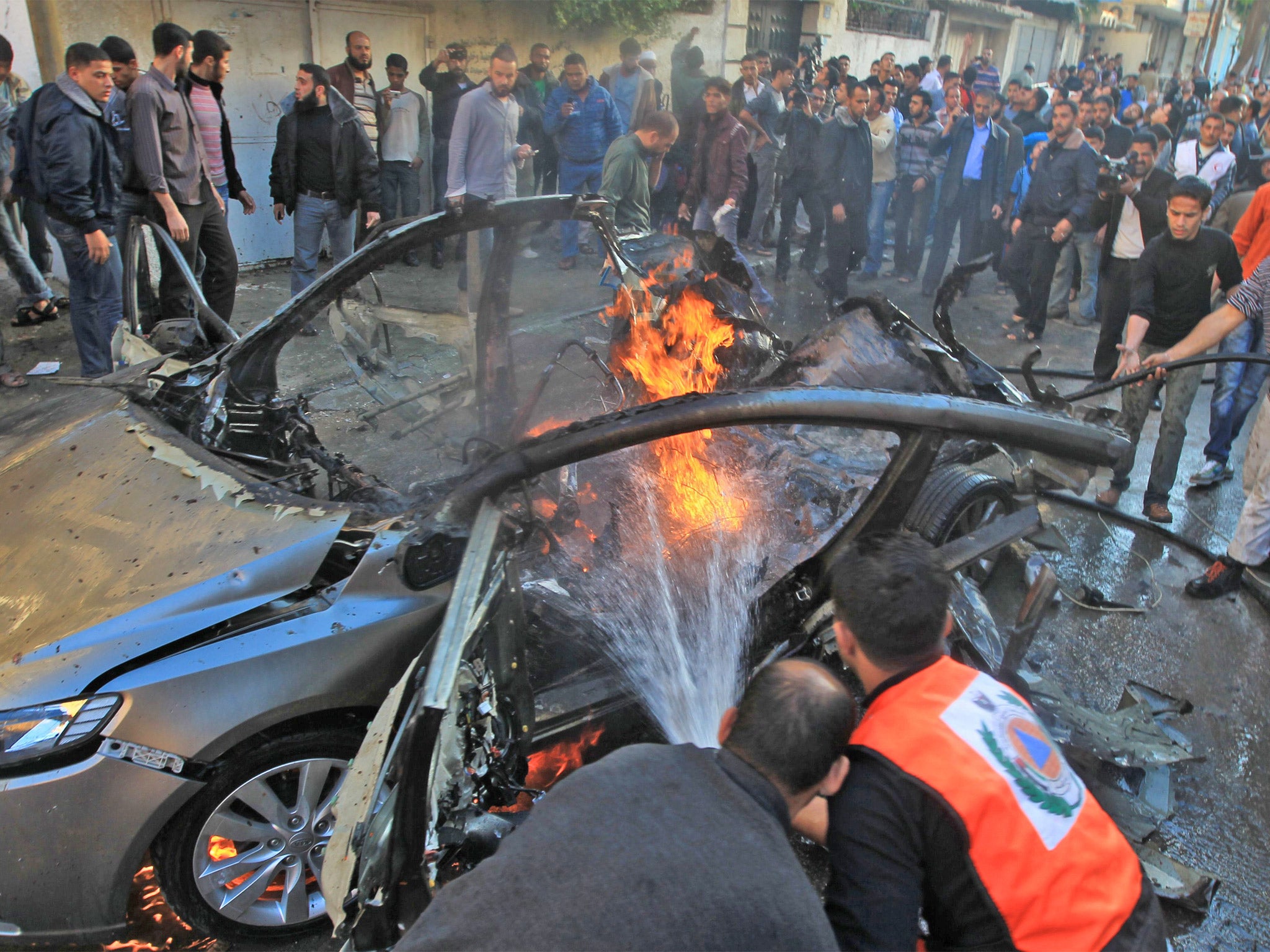Hamas, Israel and why social media like Twitter and Facebook are a new front in the war for Gaza
Constant updates from both sides provide a macabre commentary on modern warfare

Twitter spats might not seem to be of great consequence in a region where disputes are settled by air strikes and rocket attacks – but in the propaganda war between Hamas and the Israeli army it has become the latest battleground.
The exchanges began after the Israeli Defence Force parked its tanks on the social media site boasting at @IDFSpokesperson that Ahmed al-Jabari, head of the Hamas military wing, had been “eliminated” by an Israeli air strike, linked to a Twitpic poster of the Palestinian and his alleged offences.
Soon afterwards the IDF posted a 10-second black and white video on its YouTube page showing a car moving slowly through the streets before bursting into flames from an apparent missile attack. In an official blog, the IDF said: “This was a surgical operation in co-operation with the Israeli Security Agency that was implemented on the basis of concrete intelligence and using advanced capabilities.”
Inevitably, Hamas was watching. The armed wing, Izz ad-Din al-Qassam Brigades, has its own Twitter account @AlqassamBrigade and tweeted back to @IDFSpokesperson to say: “Our blessed hands will reach your leaders and soldiers wherever they are (You Opened Hell Gates on Yourselves)”.
Anyone who reads about the Middle East online will be used to reading the extremist and abusive comments that are invariably attached to news articles about the region. But the use of social media by the key protagonists for the purpose of making violent threats presents the big internet companies with an ethical dilemma.
YouTube managed to get the IDF to take down its video on the grounds that it breaches the site’s “terms of service”. But the IDF also posted its “Eliminated” poster on its Facebook page (of which there is even a Spanish-language version), along with the warning: “We recommend that no Hamas operatives, whether low level or senior leaders, show their faces above ground in the days ahead.” The post garnered more than 14,600 likes and more than 6,000 shares.
Yesterday @AlqassamBrigade was trying to fight back by posting a running commentary on its artillery attacks on Tel Aviv and other parts of Israel, boasting that “12 Katyusha rockets” had been launched at one military base and that “11 [Israeli] soldiers” were reported injured in another strike. Twitter’s own rules include an edict on “violence and threats” which states that “You may not publish or post direct, specific threats of violence against others”.
But @AlqassamBrigade is expanding its profile, with nearly 10,000 followers by last night. The @IDFSpokesperson account has a 98,000 following.

Join our commenting forum
Join thought-provoking conversations, follow other Independent readers and see their replies